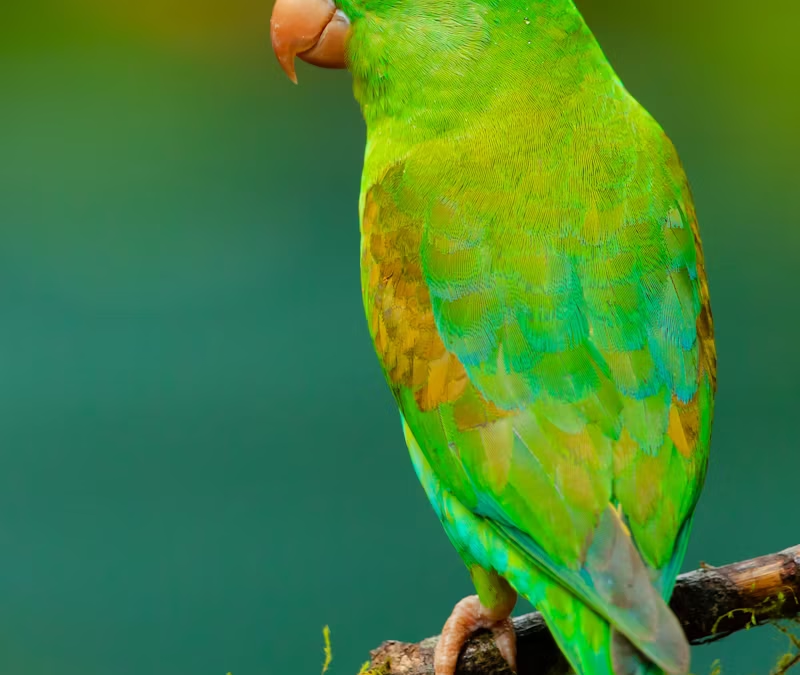Understanding Parrot Behavior
Understanding Parrot Behavior: A Complete Guide for Bird Lovers
Parrots are among the most intelligent and emotionally complex pets you can have. Their vibrant personalities, vocal talents, and social nature make them captivating companions—but also demanding ones. To ensure a healthy relationship with your feathered friend, it’s essential to understand parrot behavior and what it means in different contexts.
In this guide, we’ll explore the key aspects of parrot behavior, including vocalization, body language, bonding tendencies, stress signals, and how to promote positive interactions. Whether you’re a new bird owner or an experienced enthusiast, decoding your parrot’s behavior is the first step to building trust, communication, and a lifelong bond.
Why Understanding Parrot Behavior Matters
Parrots are not just colorful birds; they are highly intelligent creatures that use a range of non-verbal and verbal cues to express their needs and emotions. In the wild, their behaviors serve important roles in communication, safety, and flock bonding. In captivity, parrots adapt these instincts to interact with their human caregivers.
Misreading your parrot’s signals can lead to stress, fear, or aggression, while recognizing them can strengthen your connection and prevent behavioral issues like feather plucking, biting, or excessive screaming.
Vocalization: Not Just Noise
Parrots are naturally vocal animals, and each sound they make can mean something different. Their vocalizations can include chirping, squawking, whistling, talking, and mimicry.
Common vocal behaviors:
• Chirping or singing: Indicates contentment or a happy mood.
• Whistling and mimicking: Parrots enjoy imitating sounds when they are mentally stimulated and engaged.
• Screaming: May signal distress, boredom, or a call for attention.
• Talking or muttering: Social parrots often “talk” when trying to bond or entertain themselves.
Excessive screaming or sudden silence may indicate stress, illness, or environmental discomfort and should be addressed promptly.
Body Language: Reading the Feathers
Parrot body language offers crucial insights into their mood and intentions. Unlike dogs or cats, parrots rely on subtle physical movements to communicate how they feel.
Key body language signs of Understanding Parrot Behavior:
• Fluffed feathers: Can mean comfort or, if persistent, illness.
• Tail fanning and eye pinning (pupil dilation): Signals excitement, aggression, or territorial behavior.
• Wings slightly open or drooping: Can indicate relaxation—or overheating in some cases.
• Beak grinding: A sign of relaxation, often before sleep.
• Biting or lunging: A defensive behavior often due to fear, pain, or overexcitement.
Learning to observe these cues allows you to respond appropriately and foster a sense of safety and trust.
Bonding and Social Behavior
Parrots are flock animals that form strong attachments. In a home environment, their owners become their flock. Understanding how your parrot bonds will help you build a positive, long-term relationship.
Bonding behaviors:
• Regurgitating food: A sign of affection and trust.
• Following you around: Indicates attachment and curiosity.
• Cuddling or head-bowing: Seeks attention, petting, or grooming.
Understanding Parrot Behavior, Some parrots become overly attached and may show signs of jealousy or separation anxiety. It’s important to balance affection with independence training to prevent clingy or possessive behaviors.
Stress and Behavioral Red Flags
Like humans, parrots can experience stress and anxiety, which often manifest in their behavior. Recognizing these early can help prevent serious issues.
Common stress signals:
• Feather plucking or chewing: Often due to boredom, neglect, or medical issues.
• Aggression or biting: May stem from fear, hormonal changes, or lack of trust.
• Repetitive pacing or head bobbing: Signs of anxiety or under-stimulation.
• Loss of appetite or energy: Could indicate illness or depression.
If these behaviors persist, it’s critical to evaluate their environment, diet, and emotional needs—and consult with an avian veterinarian if necessary.
Enrichment and Mental Stimulation
Bored parrots are more likely to develop behavioral problems. To encourage natural behaviors and a happy parrot, provide plenty of mental stimulation:
• Toys: Rotate foraging toys, chewable items, and puzzles.
• Training: Use positive reinforcement to teach tricks and commands.
• Social interaction: Daily time outside the cage and conversations.
• Routine: Birds thrive on structure and predictability.
A stimulated parrot is a happy and well-adjusted companion.
Building Trust Through Understanding
Trust doesn’t happen overnight. Parrots need consistency, patience, and respectful boundaries. Avoid yelling, sudden movements, or forced handling. Use treats, calm speech, and routine interaction to build a strong emotional connection.
Every parrot has its own personality, so spend time observing and interacting to learn what makes your bird feel safe and loved.
Final Thoughts: Decode, Don’t Discipline
Understanding parrot behavior is the key to a healthy, rewarding relationship. Instead of reacting to undesired behaviors with punishment, ask:
• What is my parrot trying to tell me?
• Is it scared, bored, lonely, or confused?
• How can I meet its needs better?
By tuning into their vocal cues, body language, and emotional needs, you’ll become more than just a pet owner—you’ll become a trusted flock mate.

